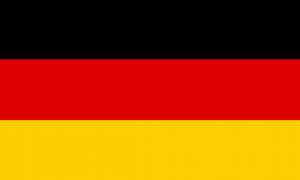franz über mich englisch 3

back to German version
A short treatise about my work:
oooo
00000
Prof. Dr. Franz Littmann
The picture has only the meaning one is giving to it
– about the work of Lutz Schoenherr –
We are incapable of presence, claims the philosopher Peter Sloterdijk. Instead of dealing with the here and now, technical convenience dominates. To “take” a photo means to take a precaution. Wanting to keep and to preserve means: escape. One takes pictures in order not to be present. When tourists get off the bus, take a photo and get back on again with relief, they flee from the extraneous/strange. They flee what they do not immediately understand. Or what they label as “beautiful”. They put that in the box and keep it at a distance. By doing so a real encounter with the present is impossible.
The „graphic art work“ by Lutz Schoenherr is completely opposite to this attitude. Bulkily it shows familiar things, but, as the painter Stefan Kunze noted, “far removed from what is actually visible”. Indirectly and discreetly, the futility of his work calls for abandonment to the present. And to look at what is currently in focus. It’s about being present and reacting to the unknown, not yet categorized.
As the playful unavailability of these images refuses to see what is common in everyday life, the viewer is forced to come up with something. The unidentifiable challenges people to engage, to slowly approach and thus to contemplate what is present.
How Schoenherr’s methodical approach works is illustrated by a bon mot by the poet Stéphane Mallarmé. One day the painter Edgar Degas is said to have asked him: „Monsieur, when do you have the idea of a poem and how do you put this idea into practice?“ And Mallarmé is said to have answered: „But monsieur, you don’t make a poem with ideas, you do it with words!“
Lutz Schoenherr makes his pictures with colors. With color tones, to be precise. His starting point are almost always basic geometric shapes such as circles (including semicircles or quadrants), squares and triangles. Of course, they are not completely meaningless, after all one involuntarily associates the aesthetic program of the Bauhaus, the De Stijl movement, the “open work of art” (Umberto Eco).
You certainly don’t say too much when you connect Lutz Schoenherr’s aesthetics with the art of losing oneself brought into play by Walter Benjamin. In his “Berliner Chronik” Benjamin suggested that the important thing was not to find your way around the cities, but to learn to get lost.
Lutz Schoenherr’s works are also a kind of labyrinthic confusion. By puzzling out or “pixelating” city maps and city views of Edenkoben, for example, he sets the observer the task of creatively reviving his own memory. What corresponds to this pleasure in getting lost is the pleasure of children who, with the help of play, free themselves from the system of control and constraints. Children find it much more interesting to walk on the curb instead of the sidewalk. Even the person who plays, the „homo ludens“, tries to interrupt normal reality while playing. The game enables a relief from the weight of the necessities of life.
Consistent with this function of play as an alternative orientation, Lutz Schoenherr’s schematically constructed „graphic art“ also represents a challenge to loosen up. The observer should shift his attention to the present for a moment. On the so to speak unusual of the color nuances, combinations and materials. What he needs for this is no more, but also no less than the Buddhist attitude of letting it happen.
In the best-case scenario, the viewer’s pupils then become like those of a child, namely naive and versatile. Thinking, comparing, analyzing and classifying are of no use at all. Rather, it is about a playful activity in which existing rules are suspended. The decisive factor when exceeding the “prescribed” is the willingness to pause for a moment. Now the picture only has the meaning for the viewer that he gives him. So that the world appears as Henry Miller described it in his essay on the painter Joan Miró (“The smile at the foot of the ladder”): “For a short period of time we can lose ourselves, dissolve into miracles and bliss, transformed by mystery. We emerge again to confusion, sad and horrified by the everyday sight of the world. But this everyday world, which we think we know all too well, is the same, the only world, a world full of magic, full of inexhaustible magic”.
Franz Littmann (* 1948) philosopher and author from Pforzheim. Franz Littmann studied philosophy, education and sociology in Marburg and did his doctorate with Dietmar Kamper. From 1987 to 2007 he worked as an art critic and art scout for the Karlsruhe city culture magazine „Klappe Auf“. He works for the “Literary Society Karlsruhe” since 2002. Franz Littmann mainly dealt with “Johann Peter Hebel” in his publications.